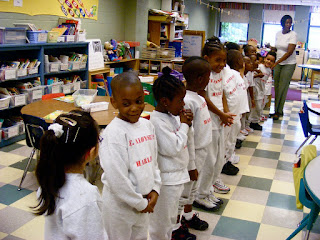Reflections by volunteer, Adrienne C., age 23.
Adrienne just completed her Masters in Education at Boston College, where she also received a B.A. in Education and Spanish. She will be teaching Spanish at a junior high in a suburb of Boston this fall.
Last night was a first. I’ve never gone out looking for homeless men and women before; on the contrary, I, along with mainstream America, have tried to pretend they do not exist. I am guilty of turning away on the street and walking by as if the sidewalk were empty. Last night, though, we were on a mission. It was out of my comfort zone to approach someone experiencing homelessness, as I think it is with many people. Homeless men and women are one of the most obvious examples of not only the “other” in society, but also our society’s failure to take care of its weakest and most vulnerable members. As the night went on and I talked to some of the individuals we visited on the streets of midtown, I realized that they are daughters, sons, mothers, fathers, brothers, sisters, uncles, aunts, nieces, nephews. One man asked us to watch his things while he went to the van parked around the corner because someone once stole a bag with his teeth and diabetes medication in it. He had to wait a month before he could get his prescription renewed, and, fortunately, his son purchased him some new teeth. It took a moment for the word “son” to register with me. Why on earth would anyone let their father live on the street when they have the means to finance a new set of teeth? After talking with Bill, the “Mother Theresa” of the Midnight Run, I slowly grasped that the issue of homelessness is much deeper and complex than I can even begin to understand. Every homeless individual, like every individual with shelter, has a unique story, set of circumstances, and baggage to deal with. There are a million possibilities why this man’s son cannot take him in, as there are with each of the other people we encountered last night.

I was most struck by the dichotomy of lifestyles in Midtown. Our largest stop, at a church on Fifth Avenue, is perhaps thirteen steps from the Harry Winston store. Someone could feasibly walk into the store, spend a year’s rent on a piece of jewelry, which really serves no purpose other than to look pretty, and then walk by several individuals who, for whatever reason, cannot afford to pay even one month’s rent in Section 8 housing. Well-heeled young women walked by this same spot, and one girl audibly uttered, “That’s so sad.” I’m aware that passersby saw us interacting with the homeless. Their countenances ranged from disgusted to surprised to confused. One man walked by the first client we visited and actually covered his mouth and nose with his shirt, making no effort to conceal his disgust with the man’s stench. Maybe people do notice the homeless, but few actually do anything to meet neither their immediate or long term needs.
The majority of the clients we served were gracious, appreciative, and courteous. This is much more than can be said for some people who can afford to go out to eat at swanky locales and complain about every single aspect of the dining experience, down to the volume of the music in the restaurant. Too many people with privilege take too many things for granted and do not realize that one bad decision, one instance of being in the wrong place at the wrong time, or one unexpected medical expense can cause things to change drastically. Like my mother says, “There but for the grace of God.”
Sometime in the next week, I’m going to buy $40 or $50 worth of Dunkin Donuts gift cards and keep them in my wallet. Then, when I see someone one the street who is looking for money for food, I can give them one of these gift cards. It is not the most healthy or nutritious food, but at least they can have the privilege of going into a restaurant, choosing what they would like to eat, and having someone else prepare it and clean up after it. Simply doing this and engaging in a conversation, even a short one, with an individual experiencing homelessness or abject poverty reinforces their humanity. It’s possible that someone who I’m with or someone walking by one the street will think I’m crazy for fraternizing with a dirty, smelly, possibly mentally ill person, but what they believe does not concern me. These men and women are the “little ones” in society, and if they’re good enough for Jesus, they’re good enough for me.
































